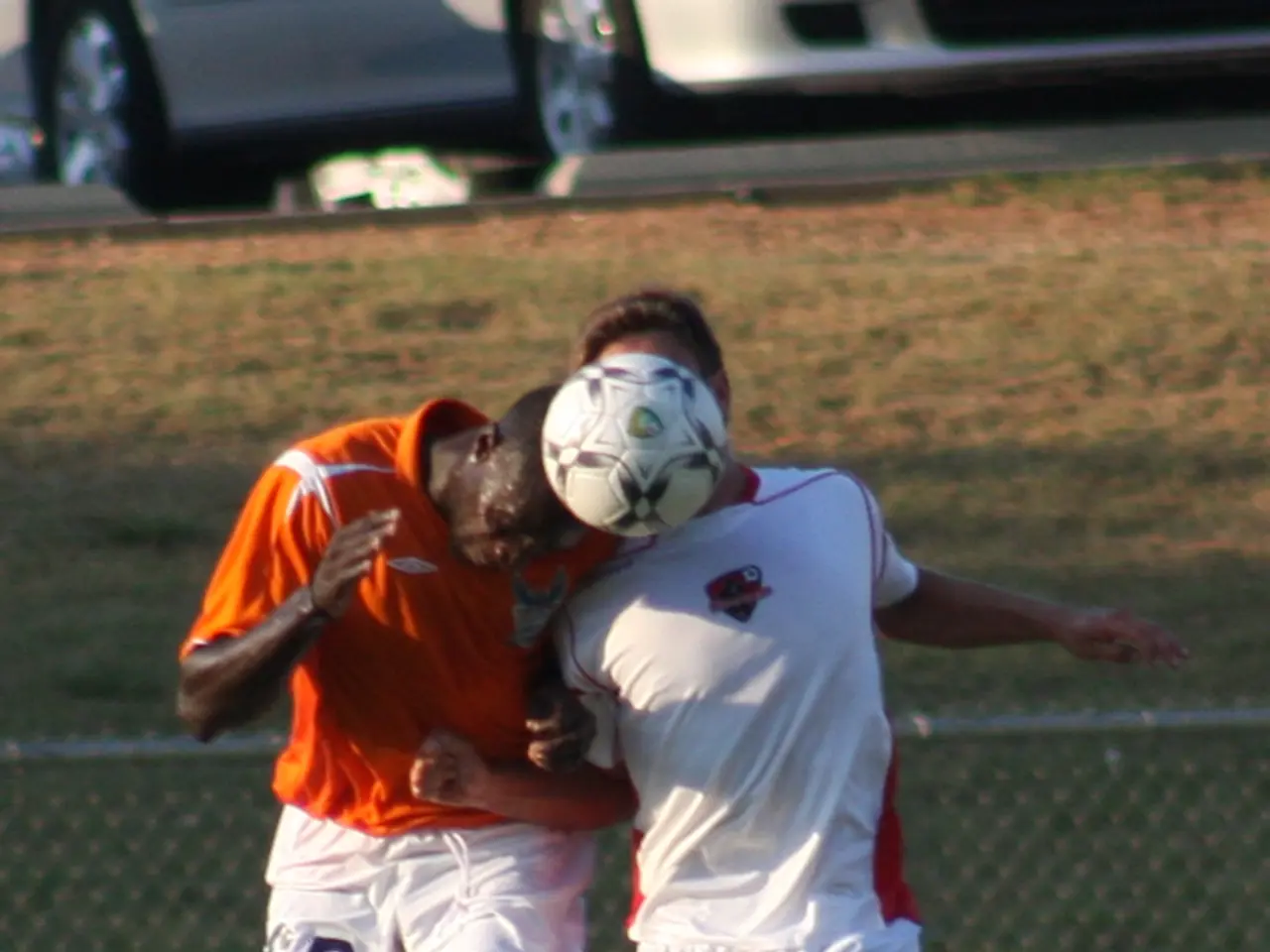Amateur sports in focus again due to Manhattan shooting and related head injuries risks
In the world of high school football, tracking and managing repeated head trauma remains a significant challenge. Current strategies, while showing moderate effectiveness, face obstacles such as underreporting of symptoms and the lack of objective diagnostic tools [1].
These strategies primarily revolve around symptom-based assessments, epidemiological research, sideline protocols, and the development of emerging biomarkers. To enhance these measures, efforts are being made to improve education, promote non-contact flag football alternatives, refine return-to-play guidelines, and develop innovative remote testing approaches [1].
A telling comparison reveals that youth tackle football players experience substantially more head impacts compared to flag football athletes—up to 15 times more total impacts and 23 times more high-magnitude impacts [1]. This underscores the significant risk associated with tackle football for repeated head trauma.
Given these findings, recommendations have been made to consider flag football as a means to reduce concussion risk for younger athletes [1]. Current management protocols rely heavily on symptom-based classification to guide return-to-play decisions, as outlined by updated Concussion in Sport Group guidelines [2]. However, challenges persist, as underreporting of concussion symptoms is common among competitive youth athletes due to fear of removal from play [3].
Moreover, sideline assessment and return-to-play protocols vary in consistency and validation [3]. There is currently no widely available objective diagnostic tool such as a biomarker or advanced imaging that is validated for routine use in this population, complicating management [3].
To address these issues, research initiatives such as the Harvard Football Players Health Study are advancing targeted studies on prevention, diagnostics, and intervention strategies, including innovative remote testing methods to enhance accessibility and compliance [4]. Additionally, broader adoption of flag football programs and educational efforts aim to reduce head impact exposure at younger ages.
Continuous refinement of return-to-play strategies based on symptom profiles and emerging research aims to tailor recovery and reduce the risk of long-term injury [2][3]. In summary, while current strategies incorporate symptom-based assessments and evolving prevention efforts, they would benefit from improved objective diagnostics, standardized protocols, and expanded use of safer play alternatives like flag football to manage repeated head trauma more effectively in high school football players.
- To foster better health and wellness for young athletes, including mental health, it's proposed that science could help refine the current medical-conditions management in high school football by developing more objective diagnostic tools and standardizing return-to-play protocols, as suggested by the Harvard Football Players Health Study [4].
- In the realm of health-and-wellness, specifically mental health, underreporting of concussion symptoms among competitive youth athletes could be mitigated by promoting education and reducing stigma, encouraging open discussions about the importance of reporting symptoms and the potential long-term health implications [3].
- Apart from the current focus on sports like football, efforts in the field of health-and-wellness could expand to include other recreational activities, such as flag football, which could provide a safer alternative for younger athletes to enjoy physical activity while reducing the risk of repeated head trauma [1].








